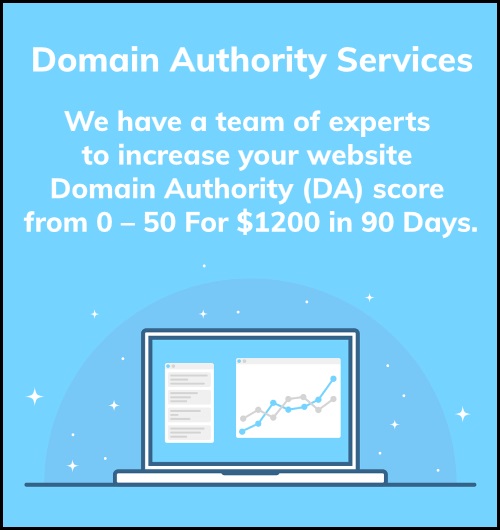Have you created a website that you happen to be proud of but aren’t seeing the fruits of your labor? Your site has some traffic, but you can’t figure out why purchases aren’t completed, and customers aren’t returning.
Yikes.
This is a bad feeling – you’ve poured so much time, effort, and money into your design and products, yet people are still not buying. What gives?!
There are a few small problems that could be causing this issue. We’re going to tell you the top 4 things to change to help your website see more conversions. Keep reading for more information!
1. You Haven’t Identified a Target Market.
The website you’ve designed is meant to appeal to the masses, offering a product or a service that is ideal for everyone. That’s great in theory, but it isn’t practical.
Appealing to everyone sounds like a great plan because it widens your possible customer base. Unfortunately, it alienates the people that are most likely to use/buy your product because it doesn’t feel specific enough to their needs. It also wastes marketing efforts on people who have no intention or obligation for your product.
When you start a business online, it can be easy to skip essential steps like market analysis, competitor research, and identifying your target market. You may have jumped into your website design without ever thinking about who you intend to sell to – or had a general idea but never dug into who your ideal customer is and why they need your product.
And if you’re wondering if you need to spend time on competitor research, the answer is a resounding YES! You can take a look at what your competition is doing and what’s working on getting a better idea of what will work best for your website.
This isn’t to say that you should copy exactly what they’re doing, but instead, figure out why they’re doing it and if there is a way to use that data to help your target market found your website.
2. You’re Out of Touch
You have an email list, and it’s growing every day – unfortunately, those marketing emails are being deleted or ignored regularly. This could be due to several factors including a lack of personalization, annoying subject lines, and content, or that your email address looks spammy and generic.
To send out marketing emails that still feel personal, you will likely need to segment your email list into groups based on likeness, customer interests, or any other applicable grouping data. To keep this process quick and easy, use a mail merge platform after dividing up your list. This will allow you to send out more emails than Google typically allows and will enable you to send a personalized marketing email indeed.
While segmenting your emails is a great start, you’ll need to grab the reader’s attention by having a strong subject line. If possible, use the recipient’s first name and include a brief mention of what’s in it for them. You can also make use of countdowns, flash sales, or any other tactics to increase the sense of urgency of your email.
Finally, avoid super generic-sounding email addresses – they can get through spam filters, but once in your audience’s inbox, they are often deleted because there’s no real connection. The email address yourcompanymarketingdepartment(at)gmail.com will probably seem like just another email to cancel. Oppositely, the email address dave(at)yourcompanyname.com sounds like it comes from an actual person (and increases the chances of your email being opened!)
2. Content Marketing Done Right
Blogging, vlogging, Instagramming, and Facebooking can fall under the category of content marketing. When done correctly, this will drive traffic to your website, increase brand awareness, and help improve your conversions.
Ideally, your blogs are SEO-friendly and rank for appropriate keywords. Unfortunately, after you’ve been blogging, vlogging, and sharing on social media for a while, you may feel as though you’ve run out of ideas relating to your industry/product.
This is where you may consider repurposing your old content. You might take a previously written blog and turn it into a video (or vice versa), choose to create an infographic incorporating information from one (or several) blog posts, or update old content to reflect newer information.
If you’re stuck in a creative rut, share content that is (or can be) relative to your industry, while giving your thoughts or insight on it. You might choose to share an article relevant to your market, or you can also take a seemingly unrelated piece and explore how the ideas expressed might impact your industry.
You may also look at Google’s trending topics to find topic ideas that can create accessible content for your blog. This will help prompt some ideas, but it can also give you a clue to what people are interested in at the moment, ensuring that your content is discovered, helpful, and current.
With content marketing, you will be most effective if you keep your target audience/market in mind. Regardless of your target market, your content should be easy to read and comprehend. Don’t use unnecessary complex words, keep sentences short, and minimize long blocks of text.
3. Don’t Be Selfish: Focus on User Experience.

If you built your website, it’s evident to you how it works. Take a step back and consider how your website process flows when navigating from your home page. Can your customers find what they’re looking for? Is your checkout experience smooth? Are pages easily identifiable?
It might be worth your time and money to hire a third-party tester for your website – if this isn’t an option, consider asking your mom (or a friend who isn’t tech-savvy) to navigate your website or make a purchase. Ask them for feedback, including their likes and dislikes about their use of your site.
Adding more, make sure that your association information is easy to find or listed in several places. You may choose to include a live chat option for people looking for specific information or have questions about products. Doing this can help ensure the buying process goes smoothly and reduce cart abandonment over simple inquiries.
4. Changing Your Conversions
If you’ve been unhappy with your sales conversions or have been seeing a decline in them – the changes mentioned in this article are worth noting and implementing. Each point connects with another:
- Identifying your target market will make marketing emails more effective;
- Useful marketing emails share great content (which drives traffic);
- Great content can increase your subscribers and;
- A great user experience keeps customers coming back.
All of these changes might seem overwhelming – and that’s okay – find a strategy that works for you and can address each of these issues. Once these four issues have been fixed, you will begin to notice an uptick in your website’s traffic as well as overall conversions!
Tech Trends
Related posts
Leave a Reply Cancel reply
Hot Topics
Categories
- Ads (5)
- Animes (25)
- Artificial Intelligence (AI) (35)
- Augmented Reality (AR) (10)
- Automotive (9)
- Bitcoin (16)
- Blockchain (24)
- Business (244)
- Business Intelligence (3)
- Cloud Computing (23)
- Computer (128)
- Concrete Technology (1)
- Cryptocurrency (10)
- Cybersecurity (42)
- Data Science (9)
- Database (4)
- DevOps (6)
- Digital Marketing (76)
- Digital Workplace (14)
- Ecommerce (1)
- Education (28)
- Electric Vehicle (EV) (1)
- Electronics & Hardware (17)
- Entertainment (42)
- Fabrication (3)
- FAQ's (1)
- Finance & Marketing (47)
- Gadgets (35)
- Games (8)
- Gear (29)
- HTTPS (1)
- Industry (46)
- Information Technology (90)
- Internet (413)
- Internet of Things (IoT) (41)
- Job (25)
- Machine Learning (6)
- Marketing (92)
- Mobile Apps (21)
- Movies (11)
- Natural Language Processing (6)
- News & Trends (109)
- Programming (4)
- Science & Technology (235)
- Security (81)
- SEO (56)
- Services (36)
- Social Media (73)
- Software (99)
- Sports (1)
- Technology (306)
- Telecom (6)
- TikTok (5)
- Tours & Travels (9)
- Uncategorized (11)
- Virtual Reality (VR) (7)
- VoIP (4)
- Web Technology (42)
- Workforce (17)
- Workspace (6)



Stay connected